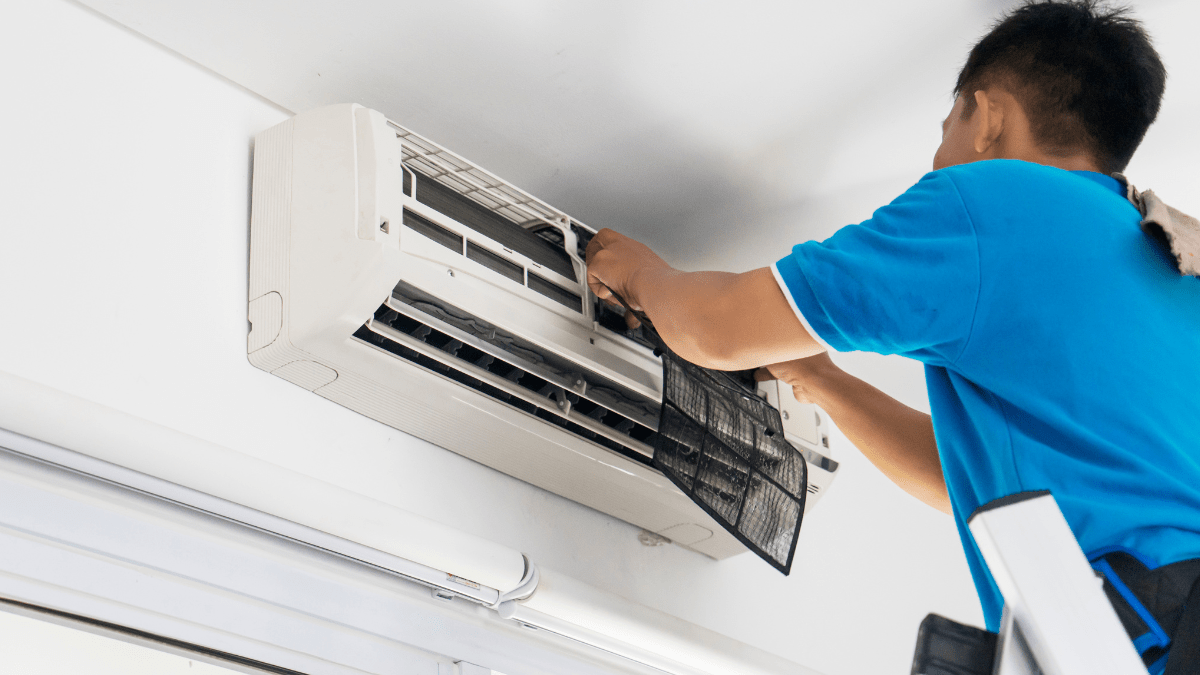10 DIY AC Maintenance Tricks for a Cool and Efficient Summer
DIY AC Maintenance: As summer heats up, ensuring your air conditioner (AC) remains in peak condition is crucial for maintaining a cool and comfortable home. Proper AC maintenance not only boosts your unit’s efficiency but also extends its lifespan and helps you save on energy bills. In this comprehensive guide, we’ll walk you through ten essential DIY maintenance tricks, from cleaning filters and condenser coils to inspecting ductwork and ensuring proper airflow. Whether you’re a seasoned DIYer or new to home maintenance, these practical tips will help you keep your AC running smoothly and efficiently all summer long.
As summer approaches, ensuring your air conditioner (AC) is in top shape becomes essential for comfort and efficiency. Regular maintenance can not only prolong the life of your unit but also improve its performance, saving you money on energy bills and repairs. Here are ten DIY AC maintenance tricks to keep your home cool and your AC running efficiently all summer long.
1. Clean or Replace Air Filters
Why It’s Important: Air filters trap dust, dirt, and other airborne particles, preventing them from entering your AC unit. A clogged filter can restrict airflow, making your AC work harder and reducing its efficiency.
How to Do It:
- Check the Filter: Locate your air filter, usually found in the return air duct or the air handler unit.
- Clean or Replace: If it’s reusable, clean it according to the manufacturer’s instructions. If it’s disposable, replace it with a new filter of the same size and type.
- Frequency: Check your filter monthly and replace or clean it every 1-3 months, depending on usage and dust levels in your home.
2. Clean the Condenser Coils
Why It’s Important: Condenser coils release heat absorbed from your home. Dust and debris can accumulate on these coils, reducing their efficiency and causing the AC to work harder.
How to Do It:
- Turn Off Power: For safety, switch off the power to your AC unit at the breaker box.
- Remove Debris: Clear leaves, dirt, and debris from around the condenser unit.
- Clean Coils: Use a soft brush or a vacuum with a brush attachment to gently clean the coils. For a deeper clean, use a coil cleaner specifically designed for AC units.
- Rinse and Dry: If you use a coil cleaner, follow the manufacturer’s instructions, and allow the coils to dry before turning the power back on.
3. Check and Clean the Evaporator Coils
Why It’s Important: Evaporator coils absorb heat from your indoor air. Dust and dirt on these coils can affect their ability to absorb heat and reduce the efficiency of your AC.
How to Do It:
- Access the Coils: Open the access panel on the indoor unit to reach the evaporator coils.
- Clean Carefully: Use a soft brush or a vacuum to remove dust. For more thorough cleaning, use a coil cleaner as per the manufacturer’s instructions.
- Check Drain Pan: Ensure the drain pan beneath the evaporator coils is clean and free of mold.
4. Inspect and Clean the Condensate Drain Line
Why It’s Important: The condensate drain line removes excess moisture from your AC system. A clogged drain line can cause water damage and reduce efficiency.
How to Do It:
- Locate the Drain Line: It’s usually a small PVC pipe connected to the indoor unit.
- Clear the Line: Use a wet/dry vacuum to suck out any clogs from the drain line. Alternatively, use a pipe cleaner or a plumbing snake for tougher clogs.
- Prevent Future Clogs: Consider using a drain pan tablet to help prevent algae growth and clogs.
5. Check the Thermostat
Why It’s Important: A properly calibrated thermostat ensures your AC operates at the correct temperature, improving comfort and efficiency.
How to Do It:
- Test the Thermostat: Set the thermostat to a desired temperature and verify if the room temperature matches.
- Replace Batteries: If your thermostat uses batteries, replace them annually or as needed.
- Consider Upgrading: If your thermostat is old or outdated, consider upgrading to a programmable or smart thermostat for better control and energy savings.
6. Inspect the Ductwork
Why It’s Important: Leaky or damaged ducts can lead to significant energy loss and reduced cooling efficiency.
How to Do It:
- Visual Inspection: Check for visible signs of damage or disconnections in your ductwork, especially in the attic or basement.
- Seal Leaks: Use duct tape or mastic sealant to seal any small leaks. For larger issues, consider hiring a professional.
- Clean Ducts: If you notice significant dust buildup, you might need to clean your ducts or have them professionally cleaned.
7. Check Refrigerant Levels
Why It’s Important: Proper refrigerant levels are crucial for your AC’s performance. Low refrigerant can cause poor cooling and increased energy consumption.
How to Do It:
- Look for Signs: If your AC isn’t cooling effectively or is running longer than usual, it might be low on refrigerant.
- Professional Help: Checking and adjusting refrigerant levels typically requires professional equipment and expertise. If you suspect a problem, contact an HVAC technician.
8. Ensure Proper Airflow
Why It’s Important: Unrestricted airflow ensures your AC operates efficiently and effectively.
How to Do It:
- Check Vents: Make sure all air vents are open and unobstructed by furniture or other objects.
- Adjust Vents: Use adjustable vents to direct airflow to different rooms as needed.
- Balance Airflow: Consider using a fan or adjusting vents to help distribute air more evenly throughout your home.
9. Inspect the AC Unit’s Insulation
Why It’s Important: Proper insulation helps maintain the temperature of the refrigerant lines and improves overall efficiency.
How to Do It:
- Check Insulation: Inspect the insulation around refrigerant lines for damage or wear.
- Replace or Repair: Replace any damaged insulation or use insulation tape to cover exposed lines.
- Maintain: Ensure insulation is properly secured and in good condition throughout the season.
10. Perform a Test Run
Why It’s Important: A test run ensures that all maintenance tasks have been completed correctly and that your AC is operating as expected.
How to Do It:
- Turn On the AC: Set your thermostat to a lower temperature and allow the AC to run for a few hours.
- Monitor Performance: Check for any unusual noises, poor cooling, or other issues.
- Address Problems: If you notice any problems, address them promptly or contact a professional for assistance.
Conclusion
Maintaining your air conditioner is crucial for ensuring a cool and comfortable summer. By following these ten DIY maintenance tricks, you can enhance your AC’s performance, extend its lifespan, and reduce the likelihood of costly repairs. Regular upkeep will not only keep your home cool but also help you save on energy bills and enjoy a more efficient and reliable cooling system. Remember, while these tips are helpful for general maintenance, don’t hesitate to seek professional assistance for more complex issues or if you’re unsure about any maintenance tasks. Stay cool and comfortable this summer!

